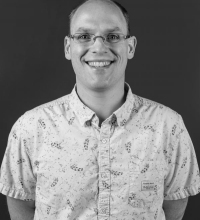Student Research Projects
Artificial Intelligence Search with Application in Computer Security
- Artificial Intelligence - Satisfiability
- Artificial Intelligence - Satisfiability in HPC
- Artificial Intelligence - GPU Accelerated Satisfiability
Machine Learning with Application in Computer Security
- Learning for Combinatorial Optimisation
- Learning for Terrestrial Sky Classification with Applications in Astronomy
- Reinforcement Learning for Telescope Control
- Reinforcement Learning for Verified Tokamak Control
Software and Papers
-
Patrick Liston has been publishing, at ICAART (link is to paper) and AAI (link is to paper), agent-based simulation studies of financial markets, both with and without stop-loss orders.
-
Xiaodi Xiang has published counter example guided Conformant Probabilistic Planning (PCP) systems, P-CEPES-XXX - Private GITHUB. The paper, with Alban Grastien, was presented at ICAPS in 2024. PCP is the problem of synthesising a sequence of actions so that the agent’s goal will be achieved with probability greater than a given threshold.
-
Ava Clifton has published distributed and/or compositional implementations of Property Directed Reachability, parallel PDR - ANU/HPC GITHUB, with the associated KR 2023 paper. Ava’s implementation is designed to solve Classical Planning problems described in PDDL, pronounced pee-diddle.
-
Mark Burgess has published our distributed SAT and #SAT tool on our Dagster - ANU/HPC GITHUB site. We have a AAAI 2023 demonstration paper, a longer paper at the PRICAI conference from 2022, and lots of tutorials online. This tool is released with demonstrations: (i) solving huge pentominoes tiling problems, (ii) counting Costas arrays, and (iii) finding issues in protocol case studies modeled in C for use with CBMC.
-
Jeffrey Smith was researching ANN tools for phase estimation in astronomy instrumentation applications. His source code is here. We have a 2022 paper at UAI on control, an open access SPIE paper on phase estimation in 2023, and detailed slides on modal analysis from 2023 RTC4AO. These papers are with instrumentation scientists Damien Gratadour and Jesse Cranney.
-
Tony Allard working in temporal (i.e., durative actions) planning published the Multi-Modal Cargo Routing benchmarks. Tony also published the TIL-Relaxed heuristic, with Patrik Haslum. This is implemented, popf-TRH - Private GITHUB and Colin2-TRH- Private GITHUB, in two strong temporal planners.
-
Mohammad Abdulaziz is a world authority on plan-length bounds, related topological properties, and formally verified AI planning algorithms. Code for computing plan-length bounds is here associated with our 2018 paper. We also developed the concept of a descriptive quotent in a IJCAI paper, with the code for that here.
-
I have authored a few decision-theoretic planning tools. Perhaps of some interest is the decision-theoretic planner associated with the cogx robotics project described in our 2017 paper. There is also the Non-Markovian Reward Decision Process Planner NMRDPP system, associated with our JAIR 2006 paper.
Biography
I am an Artificial Intelligence (AI) expert with 20 years experience, involving both research in academia and research commercialisation. I co-founded the successful AI company HIVERY in 2015, which is a CSIRO Data61 spinout supported by the Coca-Cola Founders platform. My existing areas of expertise sit across Automated Planning, Automated Reasoning more broadly, and Machine Learning. I have successfully applied my expertise in a wide range of applications including in computer security, astronomical instrumentation, continental scale retail business optimisation, and mobile robot control. My vision and focus is on developing AI technologies that extend and augment human capability. This is achieved through the study and development of AI that reasons about change in the world, and about how to extend knowledge and understanding about the world. Complementing my research and development work, my AI technology has had positive impact in a number of industrial applications, including: continental-scale operations planning for transportation of fast-moving consumer goods and continental-scale product stocking and promotion policies.
In addition to my research, development and applications experience, I have gained substantial teaching and administration experience at the tertiary level. From as early as 2006 I have been a lecturer, delivering the Advanced Topics in AI course at Griffith University, Australia. Since 2013 I have been lecturing at the Australian National University. I have lectured in a number of core discipline topics, including Theoretical Computer Science and Artificial Intelligence.
Historical ANU TechLauncher Model of Engagement
From 2018-2024 I was convener of a cluster of professional courses at the ANU offered under the title TechLauncher. That includes the Bachelor of Software Engineering “Capstone” course at ANU. It also included students from: (i) Master of Computing, and (ii) Master of Machine Learning and Computer Vision. In this program, industry, business and government organisations engaged and collaborated with teams of early career professionals and scientists, to develop, prototype and launch real solutions.
Below are some historical artfacts from this period that folks can use to inspire development of their own practicum in Software Engineering and Artificial Intelligence.
- Learn more about the 2018/24 model via our ANU TechLauncher induction
- Get a sense of the historical ANU TechLauncher community with our showcase collateral on youtube and facebook
- ANU TechLauncher “Health Hack” innovation challenge was held at NUS, in Singapore, and we have a video package of the wrapup.
- Our 2020 ANU TechLauncher Showcase was livestreamed on the ANU Experience YouTube channel, and remains available. A fireside chat moderated by Priscilla Kan-John included invited speaker Diane Herz, at the time CEO at The Social Research Centre, and Elle McCreary (nee Syrrou), at the time Investment Director at Cardia Capital. Eleven student teams presented on topics in sustainable farming, carbon accounting, cybersecurity, and infrastructure.
Historical - ANU TechLauncher Notes
Prepared by TechLauncher facilitators and me in 2022, the below is a compilation of succinct notes regarding concepts related to the historical model of engagement.
Streamlining Project Activities
Estimation Tracking and Metrics
